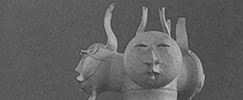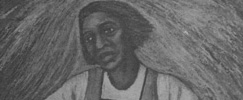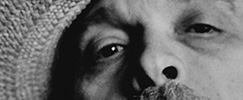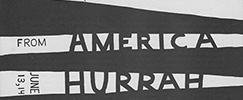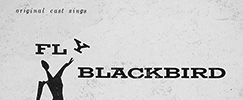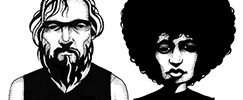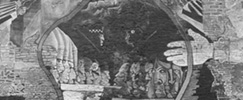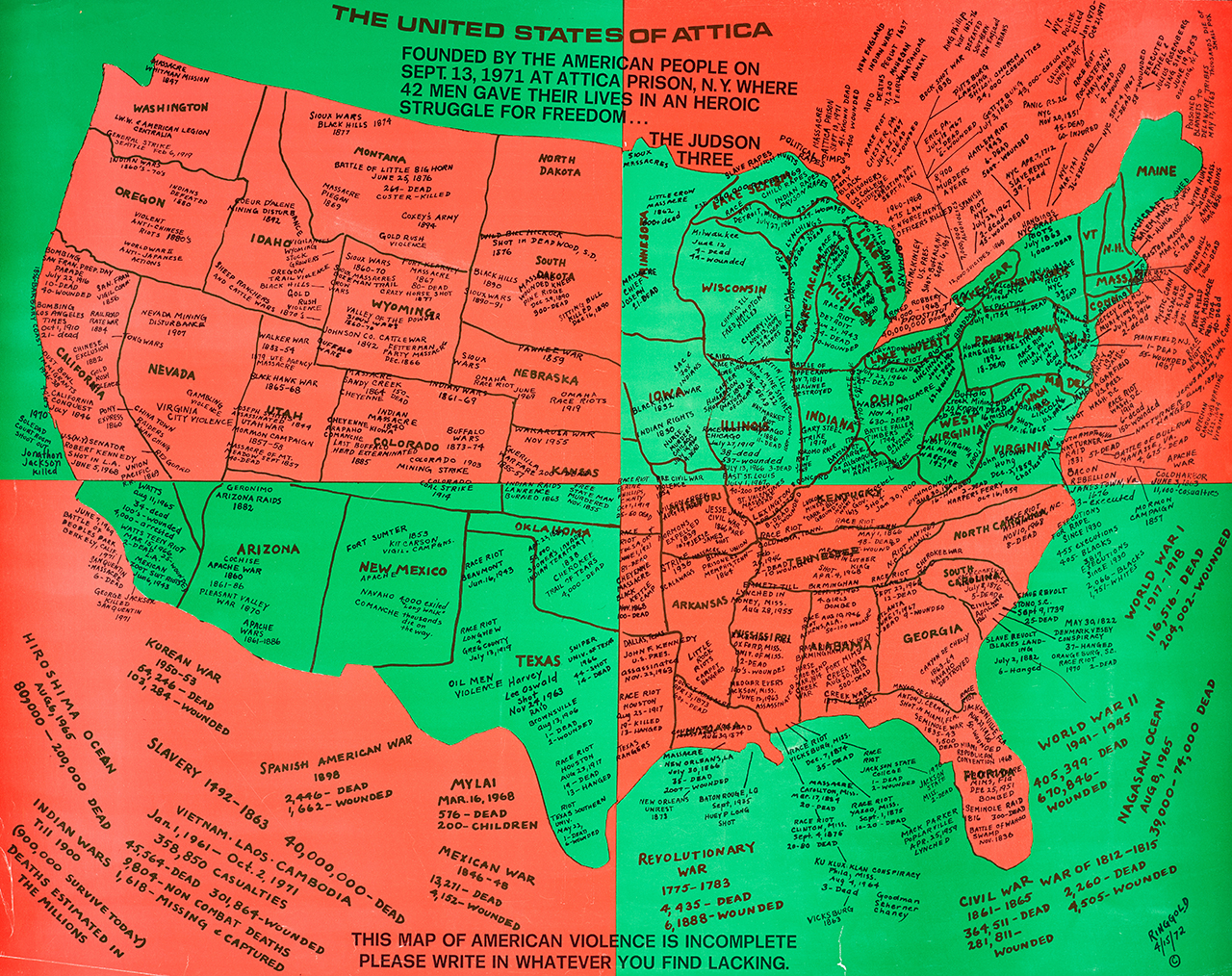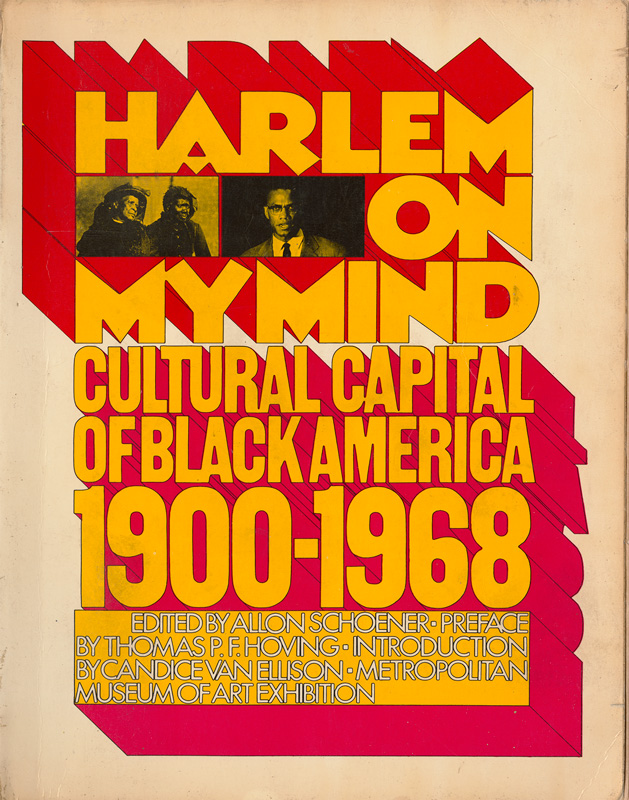On September 9, 1971, inmates took over New York’s Attica State prison in a non-violent protest against the inhumane conditions and treatment they were made to live under. Four days later, after failed negotiations between the inmates and corrections officials, the National Guard and state police stormed the facility. In the erupting melee of indiscriminate shooting, 89 people were injured and 42 killed, of which 30 were inmates and 12 were hostages.
In response to the brutal massacre of inmates protesting the conditions of their incarceration at Attica State Prison, Faith Ringgold created this map to account for the history of brutalization in North America since before the United States was established. The poster also invites spectators to participate in a communal act of remembering and recording other acts of violence across America.

